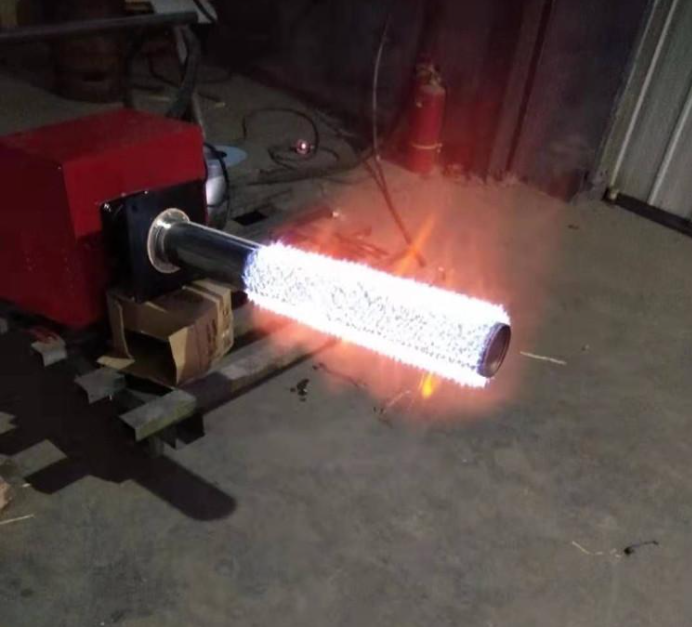Features of Fully Premixed Surface Gas Burner

Fully premixed surface gas burner refers to the combustion mode in which the gas is fully mixed with enough air before the burner and does not require air supply during the combustion process. The full premixed combustion technology announces that the gas and air are fully premixed before entering the combustion chamber to make the combustion more complete, improve the combustion efficiency, and reduce the release of harmful gases. The fully premixed surface burner adopts seamless weaving technology and uses special alloys to weave the metal wire mesh. Gas and air are mixed on the metal fiber wire mesh to produce short clusters of flame, which burns evenly and is not easy to form a local high temperature zone, so as to achieve silent combustion and ultra-low The emission effect is to achieve a nitrogen oxide emission below 30 mg/m.
The fully premixed surface burner is the world's advanced gas combustion technology, which is widely used in the field of internal combustion engines. What are the characteristics of this fully premixed surface burner?
1. The traditional high-pressure jet gas burner is diffusion combustion, while the metal fiber burner is a completely premixed surface combustion method, with a small excess air coefficient, high thermal efficiency, low CO emissions and more complete combustion.
2. The flame of the metal fiber burner is short and uniform, without the local high temperature zone of the traditional jet burner. At the same time, the fire hole strength is low, and the nitrogen oxides produced are significantly reduced.
3. The metal fiber burner significantly reduces the combustion noise, so it can reduce the smoke noise, especially suitable for use in residential areas.
4. Due to the compact structure of the premixed flame, the fully premixed surface burner can be used to reduce the size of the combustion chamber.
5. The fully premixed surface burner is convenient to obtain a large ratio of power adjustment range. Stable combustion can be achieved under the thermal intensity of 100-15000kw/m2.
6. When the output is small, the metal fiber burner can adopt the radiation heat transfer method, which can improve the heat transfer efficiency.
7. Small thermal inertia, faster heating and cooling, infrared rays in a short time, and sensitive temperature control response.
8. The pores of the metal fiber burner are small and have a certain thickness, the temperature difference between the inner and outer surfaces of the medium is large, and the metal fiber burner has a low tempering tendency.